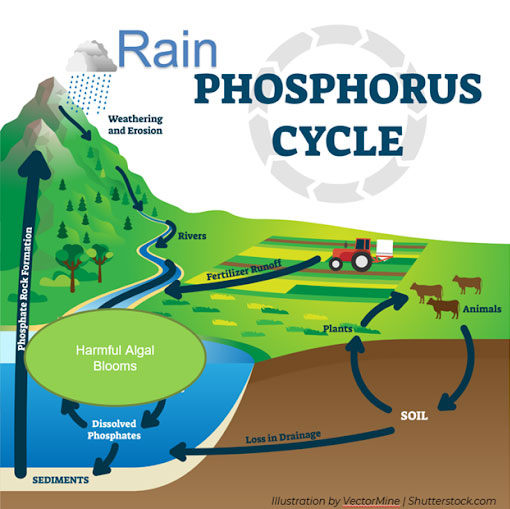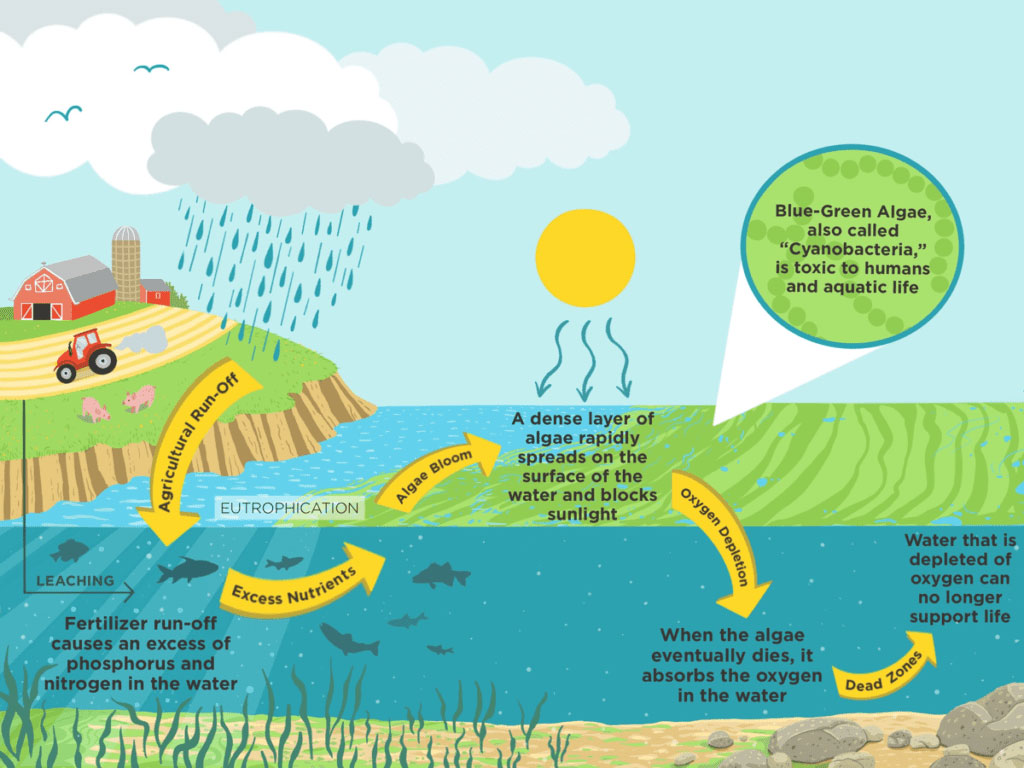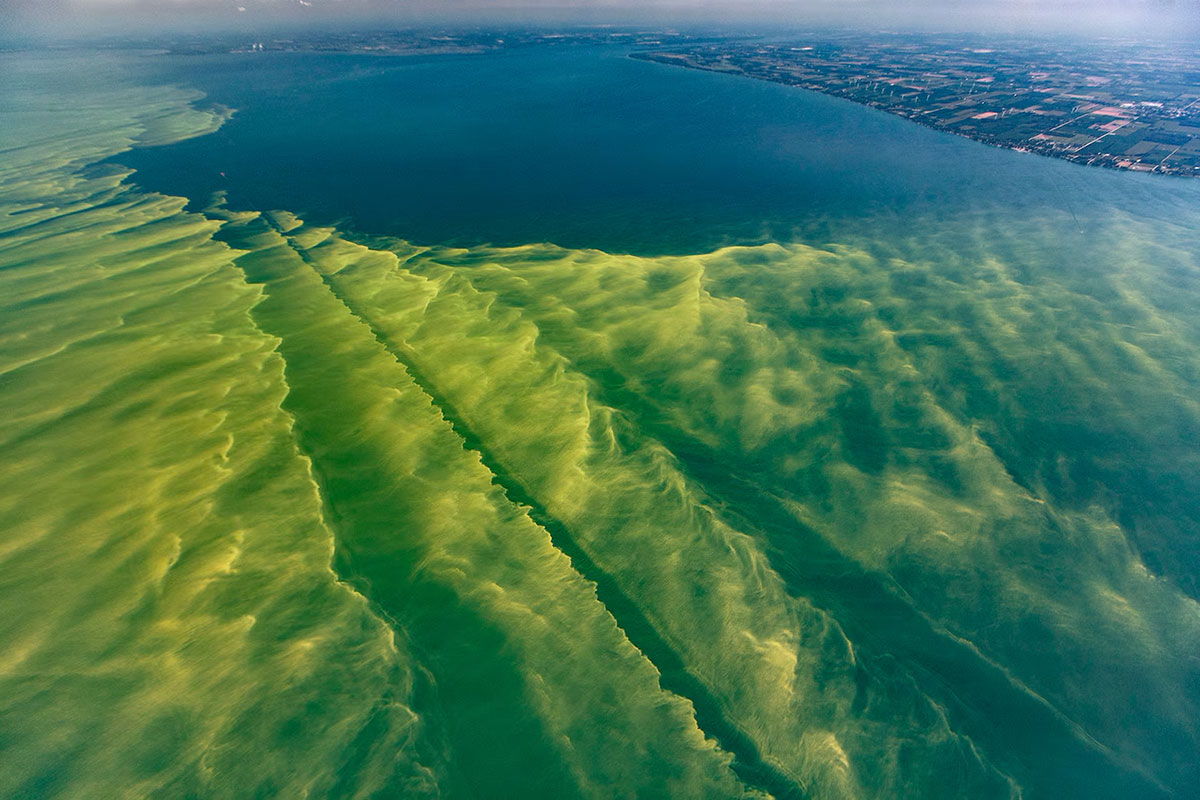Harmful Algal Blooms - HABs
Nutrients, including phosphorus, stimulate the rapid growth of algae and aquatic plants, leading to nuisance algal blooms (NABs) and harmful algal blooms (HABs). These blooms damage aquatic ecosystems. For example, as large algal blooms die and decompose, they deplete oxygen from the water, creating “dead zones” where aquatic life struggles to survive.

Illustration demonstrating the phosphorus cycle following its path in the landscape to waterways where harmful algal blooms form. Source: VectorMine, Shutterstock
Some HABs produce toxins that pose risks to human health and can contaminate drinking water supplies. HABs also negatively impact human activities such as fishing, water recreation, and tourism, as well as the coastal economies that rely on these activities. In August 2014, a toxic algal bloom in Lake Erie caused the liver toxin microcystin, produced by cyanobacteria, to contaminate Toledo's drinking water. Events like this underscore the broader economic and recreational consequences of harmful algal blooms for communities dependent on water-based activities and resources.
To learn more about HABs in Michigan visit Michigan Sea Grant’s HABS 101 site.
Runoff
Excess nutrients in watersheds flow into water bodies, such as lakes and rivers. This process is called “runoff.” Examples of things that contribute to runoff include fertilizers and manure, which contain nutrients including nitrogen and phosphorus.

Depiction of the process of eutrophication in a lake downstream of agricultural nutrient runoff. Photo Credit: Brittany Harris, Environmental Defence.
Understanding runoff—including the origin of phosphorus in the landscape and its movement through the watershed into water bodies—is essential for mitigating HABs and safeguarding the well-being of humans and the environment.
Eutrophication
Agricultural runoff can flow off farm fields overland or through subsurface drainage through tiles. Runoff leads to excess phosphorus and nitrogen in the water, fueling algal growth, and leading to algae blooms. When algae dies, it is consumed by microbes, depleting oxygen in the water and causing die-offs of fish and other organisms in a process known as eutrophication, which results in depleted oxygen levels and harmful algal blooms.

Aerial photo of the Lake Erie algal bloom. Credit Zachary Haslick, Aerial Associates Photography, Inc.